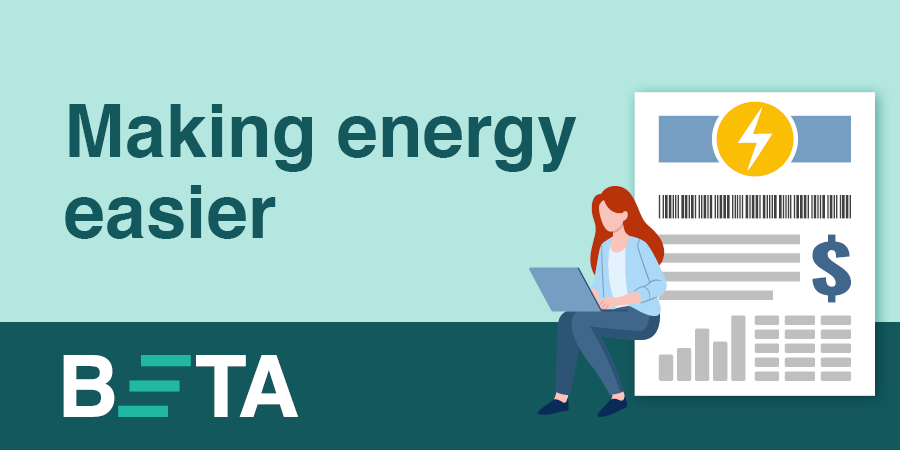
A recent collaboration between the Behavioural Economics Team of the Australian Government (BETA) and the Australian Energy Regulator (AER) has empowered consumers to seek out a better energy plan, and stimulated a more competitive market for Australians.
Navigating the energy market can be challenging. But, thanks to new research from BETA, a cheaper plan could be hiding in plain sight on your next energy bill. Research has shown changes to Australian energy bills have helped consumers to better understand their bill and the market, and make the switch to a better plan.
Creating a bill that saves you money
For energy retail pricing to be competitive, consumers need to be armed with the knowledge and tools to identify the best plans for their needs. Energy bills are often complex and a lack of understanding and confidence can be major barriers for consumers.
The AER partnered with BETA to find ways to improve energy bills and increase market engagement. BETA’s initial research explored how bills are used by consumers and how they can be better designed.
Research uncovered two main findings:
- Consumers prioritised information about their energy usage and expense and referred to their bill when comparing energy plans or seeking to improve their energy efficiency.
- Simplifying the language and design of bills and drawing attention to better deals can help reduce cognitive load, make bills easier to understand and prompt engagement with the market.
Informed by this research, the AER introduced the Better Bills Guideline which requires retailers to use simple language and follow design principles to display information logically and clearly.
Further research by BETA found that under the new guideline, consumers felt that bills were easier to read and understand, with less technical jargon and clearer designs.
The inclusion of a ‘Better Offer’ message meant consumers were also told if their retailer had a cheaper plan available and were encouraged to use the Energy Made Easy (EME) comparison website to check their plan against those from other retailers. Displaying this message on the first page of bills made it quick and easy for consumers to understand how their plan compares to others.
The ‘Better Offer’ message drove more users to the EME website, with more consumers seeking out a better plan. Following the introduction of ‘Better Offer” messages, 1 in 5 visitors to the EME website did so after being prompted by their bill, and more than 60% of these users had not previously switched retailers.
Making it easier to compare plans
As the ‘Better Offer’ message drove consumers to the EME website, BETA and the AER worked together to make it easier to compare plans online and find the best deal.
BETA drew on web design and choice architecture research, as well as user testing to better understand the user experience and identify ways to improve the site. BETA’s research found that consumers faced barriers when entering their data and felt overwhelmed by an excess of complex information when viewing results.
BETA recommended a number of changes to the data entry stage, which more efficiently steered users through questions to get the most accurate results with minimal effort. Further changes to the layout of the results page allowed users to clearly see how their plan stacked up against others on the market.
With behaviourally informed changes to search prompts, users were also more likely to share their meter data - the quickest way to get the most accurate results (39% of users entered meter data before the change, and 70% after the change). They were also more likely to respond to all questions and reach the results page (70% before the change, and 84% after).
A redesigned results page focused on displaying critical information, drawing users’ attention to their current retailer’s best offer and how this compares to the cheapest offer on the market. Research shows that the redesigned page was more likely to see users investigate further by viewing more details of competitive plans – typically the last step before making a switch. 28% of users viewed more details of other plans following the page redesign, compared to 9% before the redesign.
Through their partnership, BETA and AER have demonstrated how behavioural science can strengthen the design of government programs by placing consumer behaviour and needs at the centre of policy solutions. By understanding how consumers engage with their bill and the market, these changes have made it easier for Australians to make informed decisions, and act on them. The result is more confident and engaged consumers, cost savings, and a more competitive market that benefits everyone.
Find out more about how BETA and AER are making energy easier

